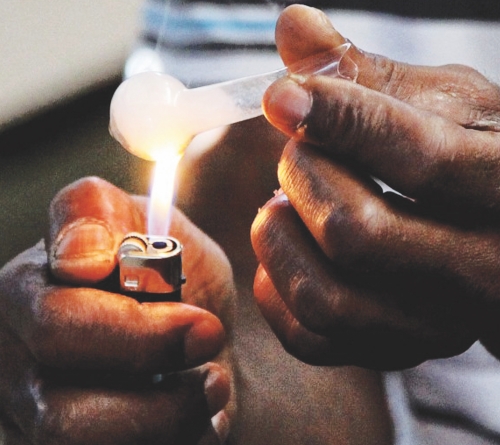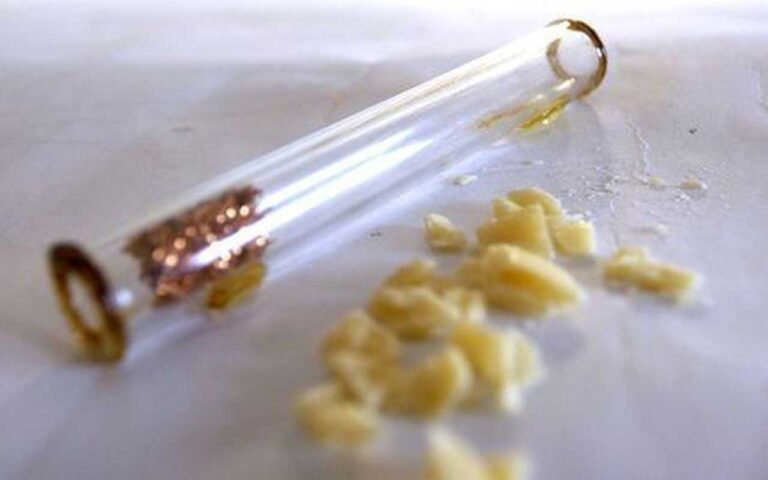
Recognizing drug paraphernalia plays a crucial role in identifying potential substance abuse. When you spot an item that seems out of place, such as a pipe or any other device that can be used for consuming drugs, this could be a red flag.
Table of Contents
Unveiling the Shadows of Substance Abuse
The Significance of Recognizing Drug Paraphernalia
Recognizing drug paraphernalia plays a crucial role in identifying potential substance abuse. When you spot an item that seems out of place, such as a pipe or any other device that can be used for consuming drugs, this could be a red flag. It’s not simply about identifying the paraphernalia but understanding its context, which often points towards a deeper problem. Spotting these items can be the first step in preventing further harm by initiating a conversation about getting help.
Why Quick Identification Matters
Quick identification of drug paraphernalia such as crack pipes is critical because it can be the difference between timely intervention and prolonged substance abuse. When these items are identified swiftly, actions can be taken to prevent harm, including providing support and resources for those struggling with addiction. Early recognition can also hinder drug use escalation, leading to a safer environment for everyone involved.
A Closer Look at Crack Cocaine
Understanding Crack’s Potency and Appeal
Crack cocaine’s allure lies in its formidable potency and the rapid onset of its euphoric effects. H3: Understanding Crack’s Potency and Appeal
Crack cocaine’s allure lies in its formidable potency and the rapid onset of its euphoric effects. It provides a nearly instantaneous high due to the large quantities of the drug that reach the lungs when smoked. Affordability and ease of production have also increased its appeal, particularly in communities where economic hardships prevail. Understanding this enticement is vital, as it emphasizes the need for effective education and preventative measures against crack use. Equally crucial is access to compassionate crack addiction treatment for those seeking to overcome dependence on this potent stimulant.
How Crack Cocaine is Consumed
Crack cocaine is typically consumed by smoking, which sends the drug quickly into the bloodstream through the lungs for an almost instant high.
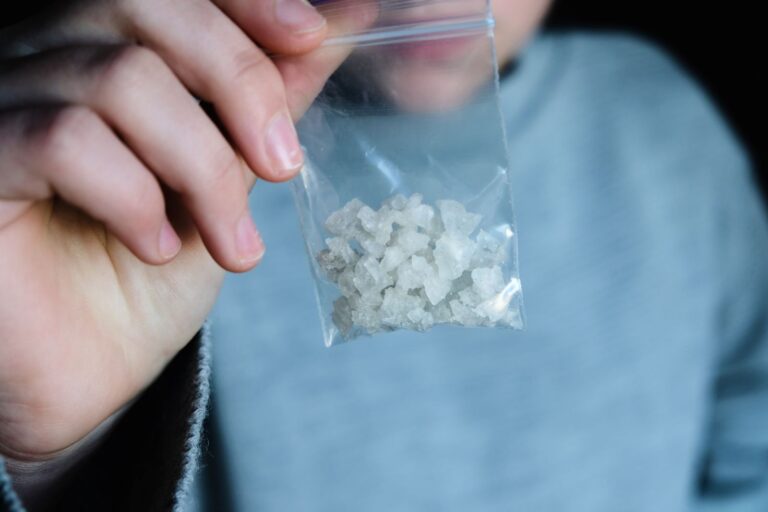
The Hallmarks of a Crack Pipe
Visual Characteristics of Crack Pipes
Crack pipes stand out due to their distinctive visual characteristics. Crack pipes have a recognizable cone shape which starts as a slender glass tube and ends in a bulbous chamber — a form that can be described as conical at the non-bulbous end. They are usually small, with a length ranging between 3 to 5 inches, and feature a narrow glass tube ending in a bulbous chamber where the crack cocaine is placed. Often, these pipes show signs of use such as soot or burn marks around one end, which result from direct contact with flame. The pipes may be clear or colored but are most frequently transparent, allowing users to see the crack rocks as they vaporize. Their recognizability comes not only from their cone shape and size but also from these tell-tale signs of usage.
"In our line of work, identifying drug paraphernalia like crack pipes is common. These pipes, often featuring a cone-like form at the tube end, are typically small glass tubes with a bulb on one end, often charred or burnt from use. They’re easy to recognize, especially during searches, as their appearance is distinct from other items found in someone's possession."
Police Seargent Tweet
Materials Commonly Used in Crack Pipes
Crack pipes require filters to prevent the small pieces of crack rocks from being inhaled. Common filter materials include copper wool scrubbers and steel wool, like Brillo pads. These materials often turn black after heavy use due to the accumulation of smoke residue. Additionally, the pipes themselves can be made from various items – household glass or metal tubes are typical DIY substitutes. Over time, these materials become stained and charred, marking them as tools for substance abuse. Recognizing these materials, especially when they appear in unconventional settings, can be a signal of drug activity.
Crack pipe seizures statistics:
- Law enforcement agencies frequently seize crack pipes during drug raids, especially in areas with high crack cocaine use. However, the exact number of pipes seized is not always publicly disclosed unless part of a significant drug bust.
- A report from Vancouver (2006) indicated that in a given year, more than 60,000 crack pipes were distributed as part of a harm reduction program to limit the spread of diseases like HIV and hepatitis C among users.
Beyond the Pipe—Other Crack Cocaine Paraphernalia
Diverse Forms of Crack Cocaine Accessories
Crack cocaine accessories extend beyond the pipe itself, encompassing a variety of tools and materials utilized in the drug’s consumption. Lighters or small torches are essential for heating the substance, while items such as razor blades, credit cards, or even chopsticks might be repurposed to handle and divide the crack rocks. People who use crack may also carry small baggies or wraps, often used to store the drug. Each accessory plays a role in the process, and often these objects are hidden in plain sight, camouflaged within the everyday belongings of an individual.
|
Accessory Type |
Description |
Typical Materials |
|
Crack Pipe |
A small, straight or bulbous tube used to smoke crack cocaine. |
Glass, metal, aluminum, or ceramic. |
|
Homemade Crack Pipe |
DIY pipes often made from everyday objects. |
Plastic bottles, cans, aluminum foil. |
|
Push Rod |
Used to push residue through a pipe to inhale it. |
Wire, metal, wood. |
|
Brillo/Steel Wool |
Used as a filter inside a crack pipe. |
Steel wool, wire mesh. |
|
Torch Lighter |
Used to heat the crack pipe intensely. |
Butane or propane torch. |
|
Homemade Foil Pipe |
Makeshift pipe made from aluminum foil to inhale vapors. |
Aluminum foil. |
|
Glass Stem |
Straight tube used as a crack pipe. |
Glass. |
Homemade Solutions for Crack Use
Homemade solutions for smoking crack demonstrate the resourcefulness of users when standard crack pipes are not available. Everyday objects easily found in the home or on the street are repurposed into paraphernalia. Items such as antenna rods, soda cans, glass tubes, and plastic bottles may be converted into makeshift pipes. Even more discreet options like eye drop containers or pen casings might be hollowed out and used. The innocuous appearance of these items can make them challenging to recognize as drug paraphernalia without a closer look.
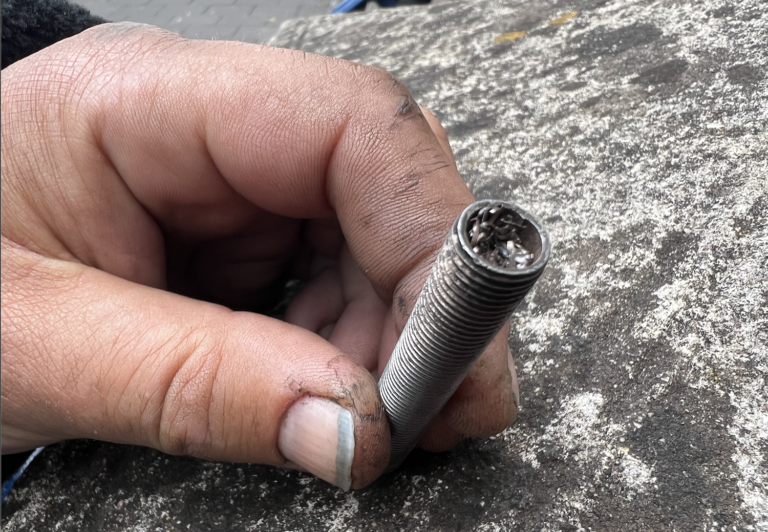
Quotes from industry experts:
- Public Health Expert: “Homemade drug paraphernalia, such as makeshift pipes or syringes, pose significant health risks. These items are often constructed from unsafe materials, like metal, plastic, or glass, that can release toxic fumes or particles when heated. Furthermore, the risk of cuts or burns from these makeshift devices increases the chance of infections, which can complicate the user’s health.”
- Addiction Specialist: “In my experience working with individuals battling substance use disorders, I’ve seen many suffer from serious infections, burns, and respiratory issues caused by homemade drug paraphernalia. These devices are not designed for safe drug use, and they often lead to accidental injuries or the transmission of diseases like hepatitis C or HIV, especially when shared among users.”
- Emergency Room Physician: “We’ve seen numerous cases of patients coming in with severe burns, respiratory problems, and infections due to using improvised drug paraphernalia. These makeshift devices lack any kind of regulation or standard safety measures, making them extremely dangerous. The inhalation of toxic fumes from materials like plastic or foil can cause long-term damage to the lungs.”
The Thin Line Between Use and Possession
Legal Implications of Carrying Crack Paraphernalia
The legal implications of carrying crack paraphernalia are serious and vary widely depending on local, state, and federal laws. Being caught with items explicitly used for smoking crack can lead to criminal charges, which might result in fines, probation, or even imprisonment. These penalties reflect the seriousness with which jurisdictions treat drug-related offenses. Additionally, a conviction can lead to long-term consequences, such as difficulties in finding employment or housing due to a criminal record. Being aware of the specific statutes in your area is crucial for understanding the risks and potential repercussions associated with possessing such paraphernalia.

When Drug Paraphernalia Indicates Addiction
The presence of drug paraphernalia doesn’t always confirm addiction, but it is a strong indicator of drug use that can lead to dependence if left unchallenged. Those with paraphernalia often may have begun experimenting or using casually, but the compulsive cycle of addiction can quickly take hold. Signs that paraphernalia use has progressed to addiction include an increase in the quantity and frequency of use, social withdrawal, neglect of responsibilities, and continued use despite negative consequences. Understanding this transition can be pivotal in recognizing when to seek professional help for someone showing signs of crack cocaine addiction.
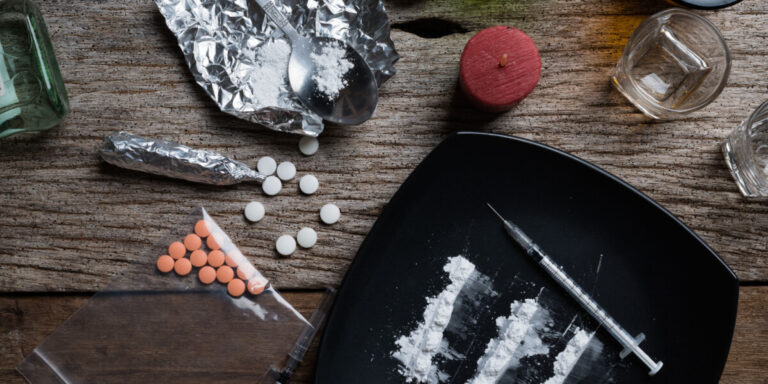
Case Study: Mark’s Journey from Paraphernalia Use to Crack Cocaine Addiction
- Background: Mark, a 28-year-old construction worker, initially experimented with marijuana at social gatherings. His life changed dramatically when he tried crack cocaine at a party, using a glass pipe provided by a friend. He experienced a powerful high, which quickly led to habitual use.
- Transition to Addiction: Within months, Mark started using homemade paraphernalia, such as aluminum foil and hollowed-out pens, to smoke crack. As his tolerance increased, he needed more frequent and larger doses to feel the effects, leading to a cycle of constant craving.
- Consequences: Mark neglected his job and family, selling personal belongings to fund his addiction. He suffered health issues, including burns and respiratory problems, and eventually faced legal consequences after being arrested for possession of crack cocaine and paraphernalia.
- Recovery: After entering a court-mandated rehabilitation program, Mark reflected on how using makeshift paraphernalia had contributed to his addiction. He has since become an advocate, sharing his story at support groups to raise awareness about the risks associated with crack cocaine use and the importance of recognizing the dangers of drug paraphernalia.
Stepping Stones to Intervention
Reading the Signs: What to Do If You Find a Crack Pipe
Discovering a crack pipe can be alarming, but how one responds can make all the difference. First, remain calm and approach the situation with compassion rather than confrontation. It’s important to communicate concern for the well-being of the person involved and express your readiness to support them in seeking help. Avoid judgmental language; instead, use “I” statements to articulate your feelings and concern. Gathering further evidence may also be helpful before you initiate the conversation. Offer resources and suggest institutional help; remind them they’re not alone, and there’s a path to recovery.
Seeking Help: Resources and Treatment Options
When seeking help for someone using crack cocaine, it’s crucial to know that numerous resources and treatment options are available. Begin with a visit to your primary healthcare provider for guidance, or reach out to local addiction support services that can provide immediate assistance. Treatment often includes detoxification, counseling, and sometimes medication-assisted treatment to manage withdrawal symptoms. Remember, recovery is a journey that includes both treatment and long-term support, such as therapy and support groups. These resources are there to provide a network of care for both the individual struggling with addiction and their loved ones.
FAQ: Clarifying Your Concerns About Crack Paraphernalia
What makes distinguishing crack pipes from other smoking devices so crucial?
Distinguishing crack pipes from other smoking devices is crucial because they are indicative of drug use, specifically crack cocaine, which is illegal and highly addictive. Identifying them can prompt necessary interventions and support for individuals at risk of substance abuse and its related health consequences. Recognizing these pipes helps to mitigate potential legal repercussions and guides the approach to provide help effectively.
Are there specific places where crack paraphernalia are more likely to be found?
Crack paraphernalia are often found in places where individuals feel safe to use drugs, this includes private spaces like bedrooms or bathrooms. However, they can also be discovered in less obvious locations such as vehicles, alleyways, or abandoned buildings where users seek secrecy. Being observant in these areas can aid in early detection of drug activity.
Is possession of drug paraphernalia like crack pipes always illegal?
The legality of possessing drug paraphernalia such as crack pipes varies by jurisdiction. In many places, possession is illegal when it’s intended for use with illegal substances, but laws differ widely. It’s important to understand local statutes to gauge the legal risks associated with possession.
How can I support someone if I discover they’re using crack cocaine?
Supporting someone who is using crack cocaine involves expressing your concerns without judgment and encouraging them to seek professional help. Offer resources like addiction services or counseling and be there to assist with accessing treatment. Additionally, maintain healthy boundaries to avoid enabling their addiction.
Dr. Mitchell G. Cohen is a board-certified Internal Medicine specialist with over 34 years of experience in patient-centered healthcare. A graduate of Hahnemann University School of Medicine, Dr. Cohen completed his internship at the University Health Center of Pittsburgh, where he gained invaluable hands-on experience. He is also a certified addiction specialist, holding membership with the American Society of Addiction Medicine (ASAM).
Currently based in Nashua, NH, Dr. Cohen is affiliated with Saint Joseph Hospital, where he provides comprehensive care focusing on both internal medicine and addiction treatment. His expertise includes prevention, diagnosis, and management of adult diseases, as well as specialized care for individuals facing substance use disorders.
Dr. Cohen is committed to fostering open communication, ensuring his patients are fully informed and empowered to make confident decisions about their health and treatment options.

MD Mitchell Grant Cohen
Dr. Mitchell G. Cohen is a board-certified Internal Medicine specialist with over 34 years of experience in patient-centered healthcare. A graduate of Hahnemann University School of Medicine, Dr. Cohen completed his internship at the University Health Center of Pittsburgh, where he gained invaluable hands-on experience. He is also a certified addiction specialist, holding membership with the American Society of Addiction Medicine (ASAM).
Currently based in Nashua, NH, Dr. Cohen is affiliated with Saint Joseph Hospital, where he provides comprehensive care focusing on both internal medicine and addiction treatment. His expertise includes prevention, diagnosis, and management of adult diseases, as well as specialized care for individuals facing substance use disorders.
Dr. Cohen is committed to fostering open communication, ensuring his patients are fully informed and empowered to make confident decisions about their health and treatment options.
